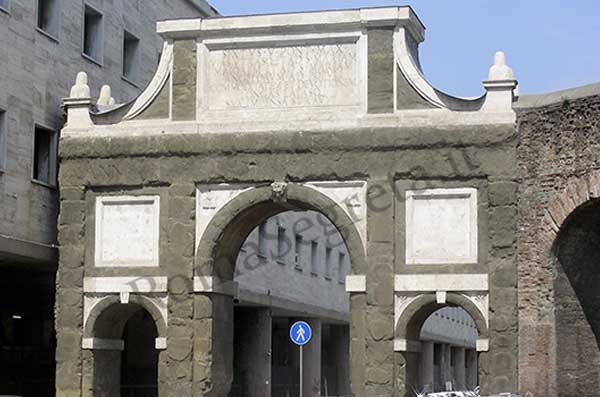
- On 30/01/2022
- In sisto-v-en
- Tags:
Sistus V and Town Planning
Sistus V and Town Planning
Although short, the Sistine Pontificate gave a strong impetus to social and economic reorganization, which culminated with a modern, radical renewal of the layout of Rome, seat of the papacy and capital of the Catholic world.
Rome had remained a medieval city and had to change. Sistus V himself embodied this change, deserving also the name of “Town Planner of God”, as Renato Barilli defined him in 1993 in an article for L’Espresso magazine.
Among the most significant interventions, Pope Sistus V promoted the first substantial reclamation of the Pontine Marshes; had the Vatican obelisk raised under the direction of the architect Domenico Fontana; completed the covering of the dome of S.Pietro and founded the new Vatican building.
He organized water regulation, strengthened the sewage system, and increased the flow rate of the aqueducts, including the “Felice” aqueduct, which was built in a very short time. The aqueduct stretches about 30 km long and feeds artistic fountains, including that of the Moses.
He also continued works on the Palazzo del Quirinale and transported the sculptural group of the Dioscuri from the Baths of Constantine; he had the Fontana dei Fiumi (Fountain of the Rivers) built under the staircase of the Campidoglio designed by Michelangelo and had the Trofei di Mario (Mario’s trophies) placed on the square.
He had three other obelisks raised in S. Maria Maggiore, S. Maria del Popolo and, the highest of all, in S. Giovanni in Laterano, where he built the new palace.
He entrusted the construction of the Palazzo della Scala Santa also to the architect Fontana to house the staircase of the Praetorium of Pilate. In addition, he had the statues of St. Peter and St. Paul placedon the top of the columns of Traiano and Antonino.
Founder of modern Rome, he opened new roads and boulevards to adorn the city and make it more comfortable.
In line with his wishes, his influence is clearly present in the Cathedral of S. Maria Assunta in Montalto.